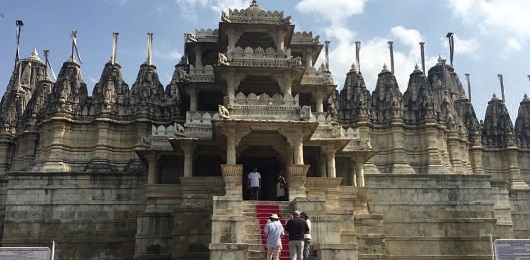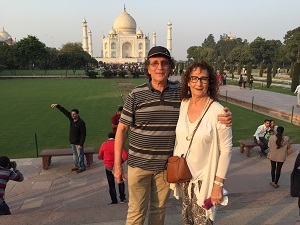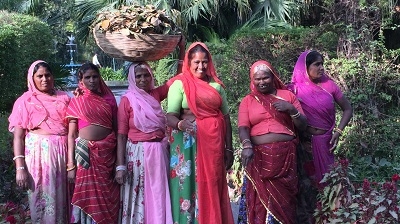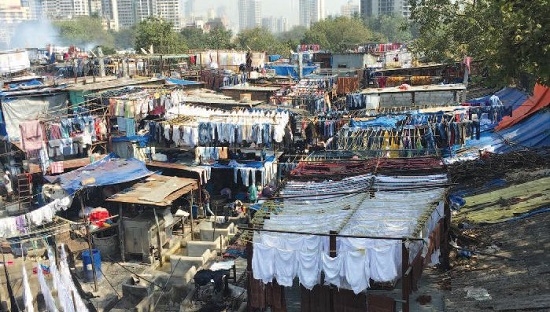Unforgettable India
India was one of those places that my husband and I agreed was low down on our list of countries we wanted to visit, and the probability was that it would never reach the top. But when we heard that a group was forming that happened to include several friends and was designed for kosher and Shabbat-observant travellers, we took a leap and signed up.
As departure approached, I became more and more ambivalent, fairly sure that I would regret the venture. Others in our group felt the same way, and together we wondered what we were letting ourselves in for. When the day came and we met up at the airport, I started to feel the excitement. Our group leaders had warned us not to expect a holiday, but to prepare for an adventure and that was the spirit that prevailed as we boarded our overnight flight to Mumbai.
I soon realized how blessed we were to have come with this particular collection of people— 36 of us—friends and strangers, who quickly bonded and became one group. We were helped enormously by our treasure, our Indian guide, Lee, with whom we all fell in love. He loved us back, told us about his visit to Israel, occasionally spoke to us in Hebrew, wanted only to be corrected and learn more. He explained life, karma, and customs in ways which made the mystery around us instantly accessible and—mostly—amusing. He told us his own story, how his father had joined the army so as to be able to provide an education for his ten offspring, and how Lee himself had married for love, out of his caste. He had just two children, to whom he was determined to give the best possible start in life.
India is every cliché you ever heard—coming to life. As awful as you feared and as magnificent as you hoped. Lee helped us deal emotionally with the challenging reality we saw around us. We've all heard about it and it does indeed exist. We learned to avoid eye contact with the beggars, the hawkers, the women with tiny babies in their arms, the cripples, the four-year-old doing cartwheels and handstands on a road busy with traffic, the toddlers trained from a heartbreakingly early age to hold out their hands and widen their dark eyes in appeal. We saw families living on the roadsides, bowls of water standing in for the family bathtub. We grew used to sharing pavement space with cows, goats, wild boars, and packs of dogs and taking care where we put our feet as we walked. One of our number somehow managed to get involved in a dispute between two bulls and was hit on the head by a horn for his trouble. We saw the numerous street sweepers with their rush brushes, who seemed to be moving the dust from one place to another while rubbish remained strewn everywhere, never collected, except outside an army base where the soldiers come out every Sunday morning to tidy up outside their compound.
Does it sound callous to say we became accustomed to this and that our life on the bus and in the dining rooms where we shared our meals was fun, camaraderie, and almost non-stop laughter?
But we also were overwhelmed by the magnificence of New Delhi, the grandeur of the several forts we visited, the lush backwaters of Cochin, the beauty, friendliness, and warmth of the people, the gorgeous colors of the saris worn by most women, the families who welcomed us into their homes, some of which were newly built but nevertheless lacked indoor kitchens and bathrooms. We tried smoking opium (and were disappointed to feel no effects!), went to a Bollywood movie in a massive cinema, where the crowd booed, cheered, clapped and whistled, interacting with whatever was happening on the screen. Weddings were taking place in two of the hotels we stayed at. Their Hollywood splendor made any wedding I've ever seen look like a knees-up down the pub, and the members of our group who ventured close to the action were ushered in and made welcome by the families of the bride and groom. We thrilled to rickshaw rides which took us into the middle of the maelstrom of Indian traffic; cars, trucks, buses, tuk-tuks, rickshaws, bicycles, motor scooters and people fighting for the same patch of road, horns hooting incessantly—not in an aggressive way rather as an indication of one's presence. No traffic lights, no signals, a complete wonder how it was that during our whole time in India we saw only one altercation—the result: a small scrape no casualties.
We did at the camel ride, the elephant ride, the selfies with local families, the bartering in the markets and the visits to the upmarket art workshops, textile factories, jewellery showrooms.
Everywhere we went we saw crocodiles of schoolchildren, all in uniform, all so well-behaved and orderly, polite and friendly when they replied to our greetings with giggles and shy glances, and in excellent English. We stayed in a former palace converted into a hotel, where the Maharaja was taking tea in the garden when we arrived. We visited the synagogues, many of them now museums, with one or two still holding services.
We were overcome, while at Mumbai's Chabad House, to see the room where the young Chabad rabbi and his pregnant wife were shot dead during the terror attack nine years ago, which included other sites in the city and resulted in the deaths of 164 people. At Chabad House, six people died. The wall against which the rabbi and his wife were made to stand before being shot has been preserved, the bullet holes still visible, and has become a shrine to the victims.
But, of course, the highlight of our tour was the Taj Mahal. It's been my ambition to visit since, as a child, I used to take down the 'T' volume of my parents' Encyclopaedia Britannica, poring over the photo of what seemed to me a fairy-tale palace. In reality, it doesn't disappoint. The first sight, coming through an archway to the revelation, took my breath away. We arrived just before sunset and wondered at the changing colors sweeping over the building as dusk deepened. Those who wanted to, had their Diana moment on the bench where the Princess was once photographed. The next morning, during an early visit to the Red Fort at Agra, we saw the Taj again, miles away, through a thick mist looking--if that were possible—even more magical and mysterious.
Back home, we wonder how we would have coped without the support of the group we feel so fortunate to have been a part of, and we're happy and grateful that we were prepared to venture outside our comfort zone and experience the unique and unforgettable place that is India.













Comments